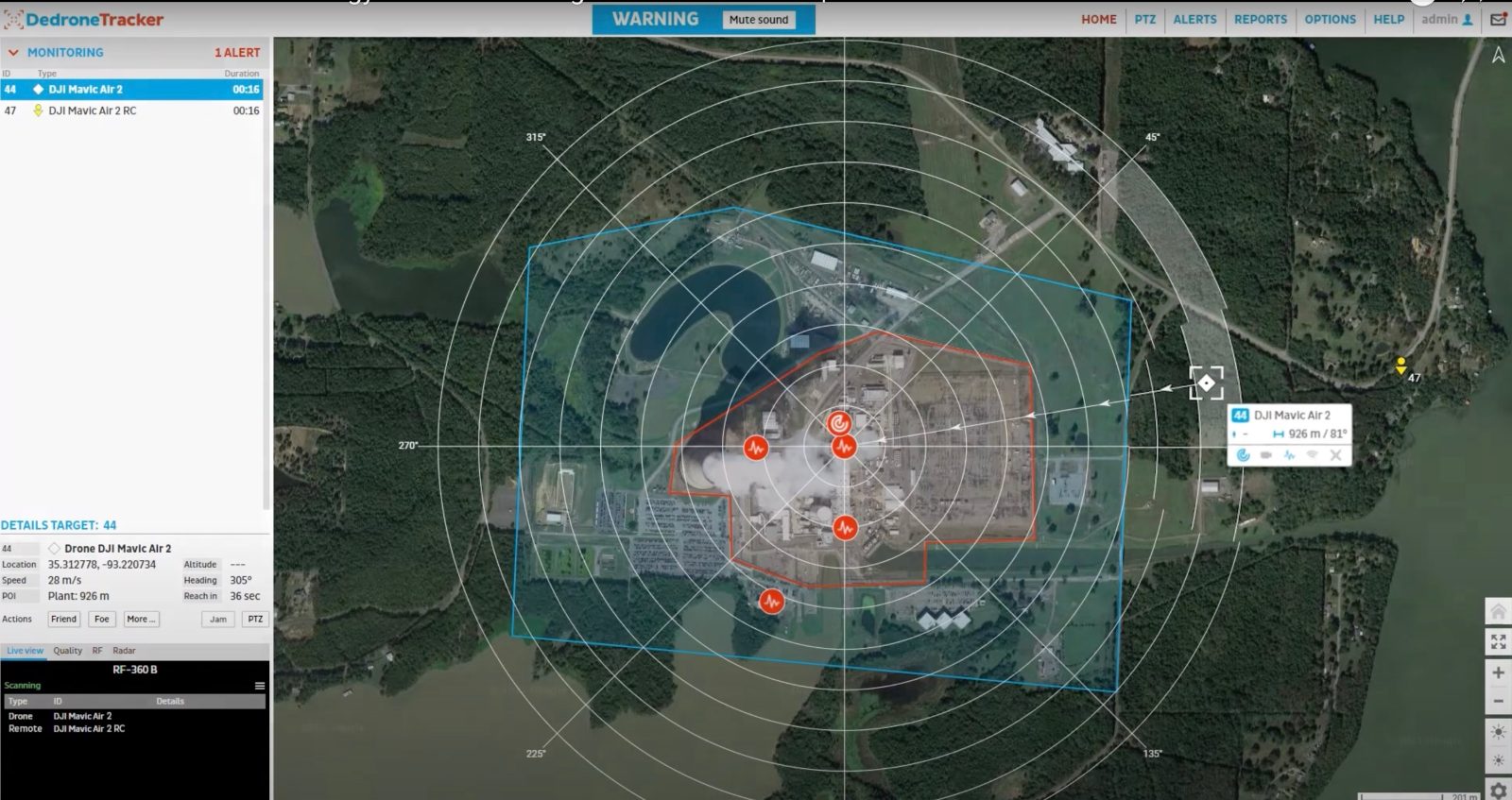
Drone detection, identification, and mitigation specialist Dedrone is introducing an update of its DedroneTracker.AI, incorporating enhancements inspired by client feedback to the cornerstone application of the company’s counter-UAV tech.
Virginia-based Dedrone says Version 6.0 of DedroneTracker.AI expands and improves internal artificial intelligence and machine learning capabilities, which are used to assess potential risk prioritization, autonomous threat interrogation, and classification of craft detected by the counter-UAV asset. Existing releases of the product already in use by US federal and several NATO member governments – as well as private clients – can be upgraded through a simple software update.
Modifications to DedroneTracker.ai always represent major developments for the company and its array of counter-UAV solutions.
Read: Bipartisan House bill aims to extend, broaden expiring counter-drone measures
Serving as the pivot point of the firm’s monitoring and mitigation products, the sensor-fusion DedroneTracker.ai is responsible for drone detection and identification activity, using craft behavior, imagery, known flight modeling, and other data to determine exact location and model type.
In addition to strengthening the platform’s artificial intelligence and machine learning performance, the new version of DedroneTracker.ai integrates a comprehensive list of US government pre-configured counter-UAV scenarios and functionalities.
Read: Dedrone unveils DedroneTactical counter-UAV solution
That, the company says, enables “any government customer to rapidly field a ‘System-Of-Systems’ capability with DedroneTracker.AI as the Single Pane of Glass for complex (anti-drone) systems.”
Also of note, the new iteration of the crown jewel in Dedrone’s product line involves the first stage of assimilation and bi-directional operation of tech acquired in the January purchase of Texas drone detection and mitigation startup Aerial Armor. The upgrade elsewhere incorporates changes conforming to the latest or looming Remote ID requirements in Japan, the European Union, and the US.
“With this latest version of our AI platform, we have significantly improved end-to-end autonomy for (counter-UAV), and enable safe, productive drone usage,” said Aaditya Devarakonda, CEO of Dedrone. “This leap in capabilities comes from proprietary motion and computer vision models to classify any and all flying objects in a 3D airspace. Additionally, we have data from millions of drone flights and pictures/videos of UAS on different backgrounds constantly training and enhancing these neural networks. Today, our massive sensor network continues to enhance these learning models to the next level creating a moat that truly differentiates our solution versus both legacy and emerging competitors.”
In addition to a diverse range of private clients using its range of drone detection, monitoring, and – when necessary – neutralizing solutions, current Dedrone customers include national governments of four G7 countries, nine US federal agencies, more than 75 critical infrastructure sites, over 20 airports, and 50 prisons worldwide.
FTC: We use income earning auto affiliate links. More.




Comments